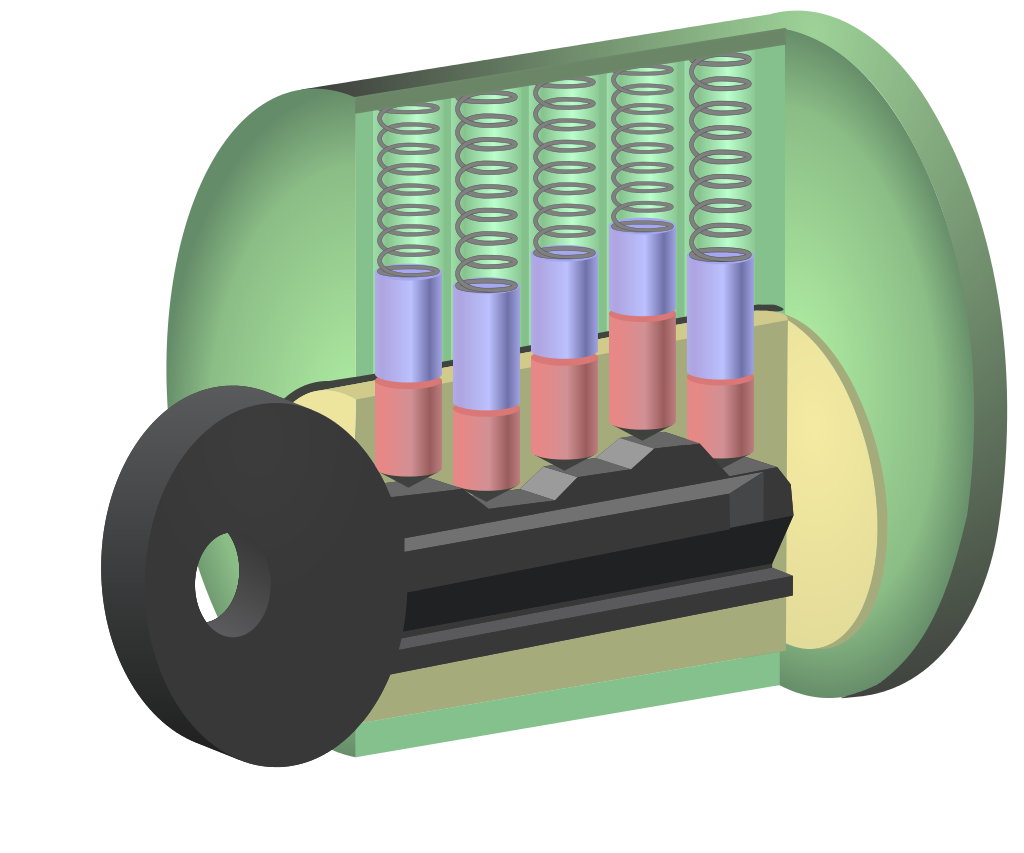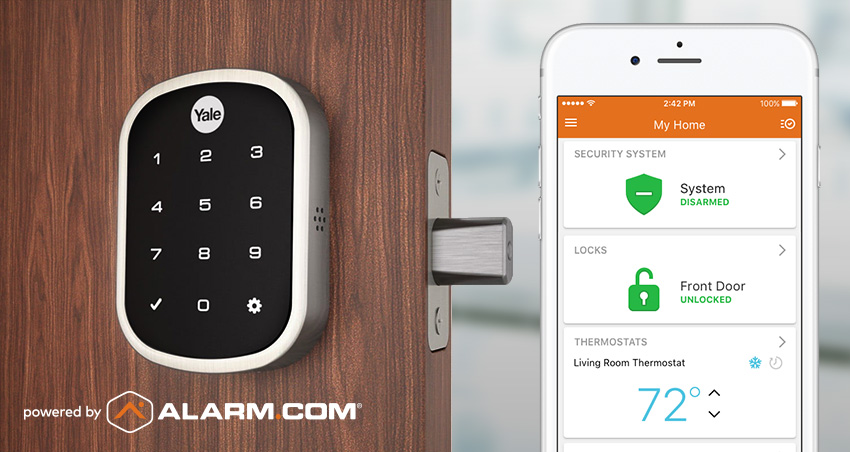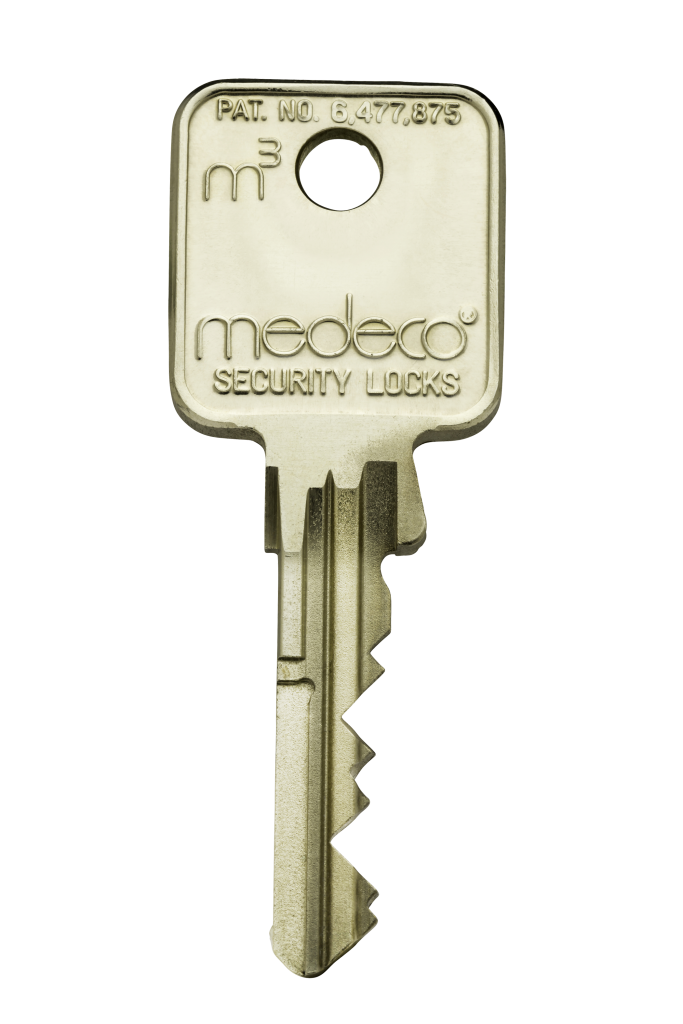Our post providing 7 Tips to Improve Home Security for New Homeowners touches on the importance of creating new keys for your home when moving into a new place. However, we recommend performing this security measure periodically even well after buying a home. After all, the longer you have the same keys work your locks, the more people get handed spare keys. If you fall out of touch with some of these individuals, you may want to change your locks. Furthermore, you never know how many keys people have copied over time. In this post, we discuss the methods and planning behind changing your locks so you can do so as effectively as possible.
We will begin by discussing the different ways you can go about changing your locks. Some people are happy with us simply re-keying their locks to make new keys work with them. Others have us change out the locking hardware entirely. Additionally, we will share some common mishaps that occur during this process. Using the wrong locks or installation methods for your work can lessen your security. From there, we will look at a couple options that we provide for high-security locks. Finally, we will discuss how creating key systems can also greatly improve home security. Let’s begin with a look at a couple ways we can change your locks!

By changing the pins in a lock, we can make a new key work the lock and render the old keys useless.
Photo credit: Wapcaplet on Wikipedia. Used under the CC BY-NC-SA 2.0 License.
Re-Keying Locks versus Changing Locking Hardware
When people wish to make new keys work with their locks, they don’t always know that they have options. Of course, homeowners can always go out and buy new sets of deadbolts and doorknobs. In the case of old or non-functioning locks, we certainly recommend this. However, we can also change the keys that work with a lock without replacing the lock itself. This process, called “re-keying,” involves making interior changes to a lock that allow the lock to work with a new key. Of course, this also makes the locks stop unlocking when presented with the old keys.
Every lock has a set of springs and pins that interact with a key to operate. The diagram included here illustrates the inner workings of a lock quite well. To re-key a lock, we change the pins inside of it. We then cut a new set of keys that interact properly with the new pins. The new set of pins will require a key shaped differently than the original pins, allowing us to “change the locks” without actually installing any new hardware. This process works well for adding security even when your locks themselves work well. However, as we mentioned earlier, sometimes you will need to change your locks and not just re-key them. Let’s take a look at ensuring you choose the right locks for the job!
What To Watch Out For in New Lock Hardware Installation
We find that when locks fail, the issues generally boil down to improper installation or bad locks. Of course, when both of these occur, your home security diminishes drastically. When installing locks, make sure that the locks remain steady after installation, without jiggling or drooping. Furthermore, choose locks with the proper backset. The “backset” is the measure from the edge of your door to the middle of the lock itself. Your existing locks will generally have either 2 3/4″ or 2 3/8″ backsets. Purchasing a lock with the wrong backset can lead to the lock’s latch or bolt not inserting itself into the right position in your door frame. This can make locks easy to bypass by sliding a credit card or other flat-surface device between the lock and the frame. Choosing locks that have the correct backset and installing them sturdily makes a huge difference.
Additionally, choosing the right locks for your home also improves security. The American National Hardware Institute (or ANSI) has accredited the Builders Hardware Manufacturers Association (or BHMA) to create a set of guidelines to rate locks on the security they provide. These standards, called the ANSI/BHMA standards, use a three-grade system. Grade 3 locks meet the lowest standards, and we find these locks on many homes. Grade 2 locks provide more security than the average home lock. As you might have guessed, Grade 1 locks, the highest-rated, provide sturdy hardware that will not get easily picked or drilled. In the case of locks, you almost always get what you pay for. If a lock seems like a great bargain, check on the rating before installing it on your home. Now, let’s get into even more detail in choosing the proper locks for your home!
High-Security Lock Options

Smart locks, such as this model by Yale, allow users to grant access to their properties via keypad codes or real-time remote smartphone control.
Choosing high-security lock options has a couple benefits. For one, potential criminals will have a much more difficult time breaching your home. Locks that provide resistance against picking and brute-force attacks will help secure your home. Furthermore, these locks also last much longer than cheaper locks. If you think of good locks as an investment, you will still save money in the long run. Replacing locks every few years eventually costs more than installing high-quality locks once. In this post, we will discuss a couple options for high-security locks. We will begin with a look at key-free lock hardware. This hardware can eliminate the need to hand out spare keys. From there, we will look at some of the very best lock hardware on the market today.
Key-Free Door Locking Equipment
Because handing out spare keys can lower your home’s security, key-free locking equipment provides a useful alternative to standard keyed locks. Keypad deadbolts and door handles have gotten quite popular over the past several years. These keypads, such as the one pictured, allow users to use entry codes, rather than keys, to unlock a door. After a code is no longer needed, you can easily delete it to avoid an unwanted visit from a contract worker or house sitter down the road. Additionally, we also install smart keypad locks. Keypad locks add a unique level of security, as you can control them with your smartphone. This allows you to grant quick, one-time door access to a visitor without providing them with a key or a code! Now, let’s look at how you can upgrade your home security by choosing the right lock equipment and utilizing key control systems.
Premier Hardware and Key Control Systems
Certain lock hardware creates a truly unique level of security. Our preferred lock manufacturer Medeco, for example, creates locks with superior resistance to picking, drilling, and other common techniques that burglars use to breach locks. Even compared to other Grade 1 locks, Medeco hardware provides exceptional security. Furthermore, Medeco and a few other manufacturers also use a key control system to help users track keys. This concept bears a little explanation.
While many customers ask us to create keys that read “do not duplicate” on them, most locksmiths will still make copies if presented with these keys. However, key control systems rely on creating a proprietary keyway to make copies of keys. Dealers of Medeco use their own patented keyway that other dealers do not have access to. This means that our Medeco customers cannot get copies of keys at another locksmith shop.

Keys that provide key control. such as those that work with Medeco locks, help you track and limit access to keys.
Furthermore, Medeco keys can only be copied by those approved to make keys by the creator of the system. Therefore, if you create a Medeco system, you would provide us with a list of those authorized to copy keys. If someone not on this list attempts to create a copy, we turn them away. Now that we’ve looked at key control systems, let’s also look at how creating a master key system can add additional door security!
Creating Master Key Systems
Designing master key systems can efficiently control access to important areas of your property. These systems allow you to give others a key that will only work specific doors if desired. For example, you may wish to give a pet sitter access to your living room, but not your bedrooms. Key systems allow you to do just this. Furthermore, master key systems also allow you to create “levels” of access for added efficiency.
These systems have a master key that unlocks all the doors on the system. From there, different keys can work different doors, allowing you to provide specific, rather than wide-ranging, access. For example, you may have a master key, then a key that unlocks all of a home’s exterior doors, and then a key that unlocks every bedroom. This type of flexibility makes creating key systems a very popular security measure. For more information, feel free to read our post on Creating an Effective Master Key System.
Putting it All Together to Change Your Locks and Add Security
We hope that you will find this post useful if you find yourself looking to change your locks. Additionally, we encourage you to contact us with any questions you may have about this post. Our company has helped provide and install locks for hundreds of homes for over 30 years. Furthermore, we provide free site surveys to help design lock systems for homeowners. Perhaps you have lock hardware now but wish to make some upgrades. Or maybe you have a property that needs a lock system installed from scratch. Either way, we will happily help choose and install a system of locks that keeps your home as secure as possible for years to come!
